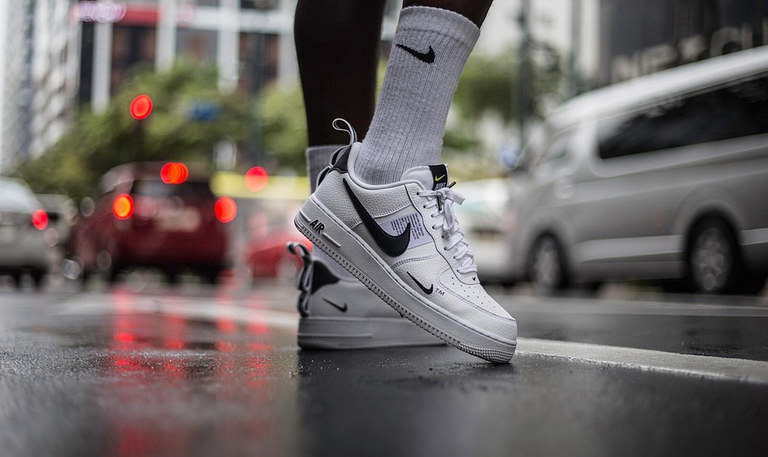The Entire History Of Nike - Part 6: Nike Vs The U.S. Government
If you wonder why so many companies have their factories in China and how they started, this post will answer that.
This is the story of how Nike took on the U.S government and how Buck evaded paying the 25 million dollars he owed the government.
The U.S. Customs sent a letter to Buck and Nike demanding 25 million dollars.
Such a move wasn't made randomly, but rather as a result of other footwear companies in the U.S. such as Converse lobbying congress to go after Nike under the guise of a law by the name of American Selling Price.
The law is a system whereby any product made outside the U.S. matches one manufactured inside the country, the outside product would have to pay a higher tariff than usual products. The tariff would be 20% of the selling price.
Not only that, Converse and other companies resorted to manufacturing similar shoes and putting them on sale for the minimum price. Such a move resulted in a higher tariff on Blue Ribbons (Nike).
Before this issue came up, Nike was projected to make 140 million dollars in sales by the end of the year.
Buck's Reaction
Buck didn't care much at first, in fact, he proceeded to open 2 new factories in England and Ireland. He also moved the headquarter to a more prominent place, and he started manufacturing sportswear.
Finally, he officially changed the company name from Blue Ribbons to Nike
Buck Fought Back
Buck realized how big his problem is and tried to talk to U.S. officials who kept demanding the 25 million dollars.
Buck talked to his contacts and decided to move the manufacturing of his products to China as the production cost there would be much lower. That's when he met David Chang who helped him orchestrate everything.
It is worth noting that people who aren't from China can't just open a factory or a company in the country. It has to be done through the Chinese government inviting them to do that.
Buck prepared a presentation to the Chinese government and later that year was invited to conduct business in the country. He signed with two different factories to manufacture his sportswear and shoes.
That's how Nike became the first U.S.-based company to open a factory in China for 25 years.
Buck Against The U.S. Government
When Buck returned to the U.S, he met a senator and the congress' chief executive financial to help him smooth over the relationship with the U.S. Department of the Treasury.
At the same time, he manufactured and sold very cheap shoes. By doing that, he changed the criteria by which the U.S. customs measure their tariff.
Also, he took it to the media and spread the word about his "little" company that's being fought by big companies in the United States with the help of the government.
Finally, he sued the companies that lobbied against him along with the U.S. government for the same amount he was required to pay, 25 million dollars.
The basis of the case was that they were trying to monopolize the business and resorting to trickery to remove his company from the business.
The Negotiations
Everything Buck did at the time wasn't actually going to work legally, however, he put enough pressure on the U.S. customs to enter negotiation with him.
The result of the negotiation was the lowering of the amount from 25 million dollars to 9 million dollars.
Cash Flow Problems Again
I am sick and tired of how much I wrote "Cash flow" during this post. But, it is the most recurring theme in the history of Nike.
Buck finally found a solution to that problem by submitting to people's advice and adding Nike to the stock market.
He gave a total of 10% of his shares to associates, kept 46% of the shares, and put the rest on sale. With that, investors in the company's stocks solved Nike and Buck's cash flow issue once and for all.
Back To The Main Target
All the way in part 1, I talked about how Buck wanted to end the domination German companies have in the U.S. sports scene.
That seemed highly unlikely as Adidas and Puma were empires at the time and it was no easy task ending their domination.
That was the case until 1984 when Nike signed a sponsorship contract with an up-and-coming basketball player you might recognize, Michael Jordan.
I will talk about how that sponsorship deal led to Nike's amazing rise in the next and final part.
Previous Parts Of The Series
Part 1
Part 2
Part 3
Part 4
Part 5
Below Are The Sources For The Entire Series
ADI DASsler’s “Impossible is Nothing” and “The Miracle of Bern”
The weird and wonderful history of the Onitsuka Tiger
The Family Feud That Led To Multiple Billion Dollar Businesses
SHOE DOG: A MEMOIR BY THE CREATOR OF NIKE
How Blue Ribbon Sports Became Nike
Nike vs Adidas: Who is Leading the Market?
Sneaker Wars: How Nike Eclipsed Rival Adidas Over The Years And Who’s Winning Now
adidas vs. Nike: 3 Moments in History That Changed the Sneaker Game

Very interesting story thanks for sharing on Listnerds😎
Have the best day @amirtheawesome1
!ALIVE
!CTP
!BBH
@amirtheawesome1! You Are Alive so I just staked 0.1 $ALIVE to your account on behalf of @benthomaswwd. (4/20)
The tip has been paid for by the We Are Alive Tribe through the earnings on @alive.chat, feel free to swing by our daily chat any time you want.
